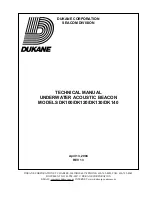
FREEZING TEMPERATURES
Never use in below freezing temperatures, unless worn partially inflated.
At or below 40° F (4° C) inflation time with CO2 gas will be longer.
Wearing a partially inflated PFD in these conditions will provide some
initial buoyancy while the PFD fully inflates.
Caution: Do not fully inflate orally and then inflate with the CO2 cylinder.
Repeated CO2 inflation after oral inflation will damage the PFD to the
point that it will not hold air or float.
OTHER USE GUIDELINES
1. Always wear your PFD when underway unless you are inside a cabin.
2. If you need to jump from any height always fold arms over your chest
to keep the PFD in place when entering the water.
3. Avoid all unnecessary activities that will be abrasive to the device.
4. Use extreme caution around sharp objects.
5. Avoid unnecessary exposure to the sunlight. See GENERAL
PRODUCT LIFE EXPECTANCY on Page 10.
6. CO2 gas from the cylinder will permeate through the chamber fabric
over time. If you are in the water for a long time, it may be necessary
to top off the inflatable orally, by blowing air in through the oral tube.
7. Inflatable PFDs are not designed for activities in which the wearer
expects to encounter impact with the water at a high speed such as
water skiing, riding personal watercraft, etc.
8. Inflatable PFDs are not designed for white water activities.
IV. IS YOUR PFD IN GOOD AND SERVICEABLE CONDITION?
Check your PFD between outings to be sure that it is properly armed;
that it is free of rips, tears or holes; that all seams are securely sewn;
and that the fabric, straps and hardware are still strong. Inspect the
inflatable portion of the PFD in accordance with Care and Maintenance
Instructions.
9
Summary of Contents for 1189
Page 20: ...20 printer id ...






















